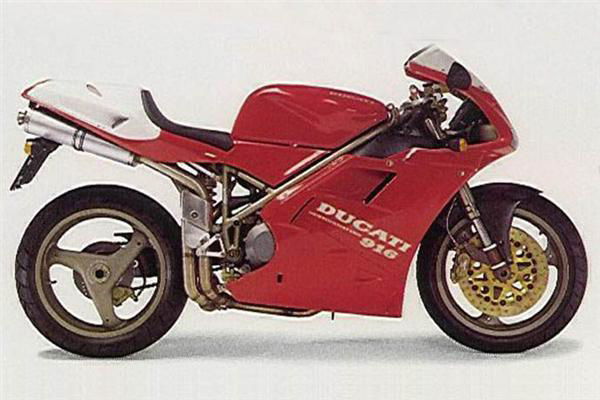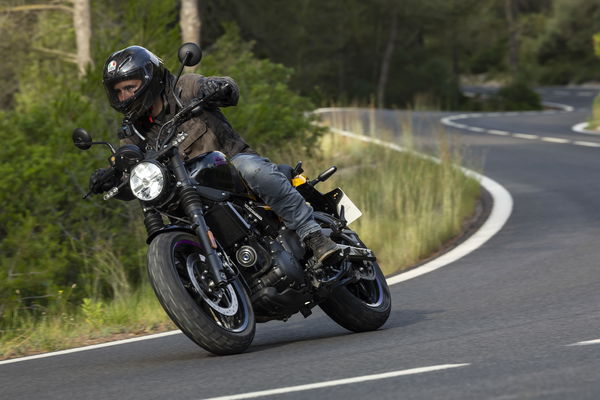RC30 review
When I’m asked what is the best race bike I’ve ever ridden, my answer is unquestionably the Honda RVF750. It had smooth power but was rapid, handled like a dream and was ultra stable into the bargain. The first time I rode one was practicing for the Suzuka 8 Hour in 1987 while I was contracted to HRC in 500 GPs. I was easily fastest in the first three sessions before being asked to sit out the fourth so that Wayne Gardner could take pole position. Gardner was known as Mr 100% in Japan at the time so our mad but likeable boss Mr.

When I’m asked what is the best race bike I’ve ever ridden, my answer is unquestionably the Honda RVF750. It had smooth power but was rapid, handled like a dream and was ultra stable into the bargain. The first time I rode one was practicing for the Suzuka 8 Hour in 1987 while I was contracted to HRC in 500 GPs. I was easily fastest in the first three sessions before being asked to sit out the fourth so that Wayne Gardner could take pole position. Gardner was known as Mr 100% in Japan at the time so our mad but likeable boss Mr. Oguma (and the man I needed to sign my next contract) insisted he should get the front row glory. So starting from 2nd I enjoyed pushing Gardner hard in the race, but then my teammate binned it after five hours so that was that, or as my Japanese mechanics said that day; ‘Niall San, that’s lacing’.
Just before the race, I visited the factory where I was shown sketches of an ‘RVF for the road’ named the RC30 destined to be launched the following year. as it looked just like an RVF with indicators I thought these must be some fanciful concept drawings so I expected the final version would possibly be just another boring road bike. I was so wrong.
So, in January 1988, and just like when I saw the first press pictures of the Yamaha RD350LC, some inner voice told me I needed to own a red, white and blue RC30.
Without even seeing it in the flesh I also knew I would relish looking at, listening to and riding this motorcycle. Owning one became even more attractive when I found out that as I was a spoiled Honda rider, I could have around 40% off the eight grand asking price so my indulgence suddenly looked like a decent investment. In the spring of 1988 I collected my bike from Jim Allan motorcycles in Falkirk and to this day that completely standard European spec (Japanese models were limited to 100bhp) RC30 is still in my possession.
Being a Honda it will come as no surprise that living with an RC30 is no more difficult than living with a C90. Unlike other homologation specials it has no weaknesses (Yamaha R7 big end shells spring to mind) so change the oil and filter regularly and it will run forever. Apart from flat batteries the only problem I’ve had was self-inflicted when I had to replace a set of clogged main jets due to six-month-old fuel turning to treacle. And like most iconic bikes, apart from the round headlights, its looks have stood the test of time. From the simple dash, down to the single sided swing arm I believe it is the one of the most beautiful and effective no nonsense motorcycles ever built.
The key to RC30s success on the road and racetrack is most definitely its rideability. It has very linear power so while it will never pull your arms out the sockets, it can be ridden hard with confidence. I would describe the handling as light as opposed to sharp so you don’t get any unexpected nervous changes of direction. The riding position plays a big part in this as although the seat appears to slope up and backwards you actually sit more in the bike, which gives the rider good feel and control. The location of the handlebars and foot pegs feel quite similar to my K8 GSX-R750.
When I’m asked what is the best race bike I’ve ever ridden, my answer is unquestionably the Honda RVF750. It had smooth power but was rapid, handled like a dream and was ultra stable into the bargain. The first time I rode one was practicing for the Suzuka 8 Hour in 1987 while I was contracted to HRC in 500 GPs. I was easily fastest in the first three sessions before being asked to sit out the fourth so that Wayne Gardner could take pole position. Gardner was known as Mr 100% in Japan at the time so our mad but likeable boss Mr. Oguma (and the man I needed to sign my next contract) insisted he should get the front row glory. So starting from 2nd I enjoyed pushing Gardner hard in the race, but then my teammate binned it after five hours so that was that, or as my Japanese mechanics said that day; ‘Niall San, that’s lacing’.
Just before the race, I visited the factory where I was shown sketches of an ‘RVF for the road’ named the RC30 destined to be launched the following year. as it looked just like an RVF with indicators I thought these must be some fanciful concept drawings so I expected the final version would possibly be just another boring road bike. I was so wrong.
So, in January 1988, and just like when I saw the first press pictures of the Yamaha RD350LC, some inner voice told me I needed to own a red, white and blue RC30.
Without even seeing it in the flesh I also knew I would relish looking at, listening to and riding this motorcycle. Owning one became even more attractive when I found out that as I was a spoiled Honda rider, I could have around 40% off the eight grand asking price so my indulgence suddenly looked like a decent investment. In the spring of 1988 I collected my bike from Jim Allan motorcycles in Falkirk and to this day that completely standard European spec (Japanese models were limited to 100bhp) RC30 is still in my possession.
Being a Honda it will come as no surprise that living with an RC30 is no more difficult than living with a C90. Unlike other homologation specials it has no weaknesses (Yamaha R7 big end shells spring to mind) so change the oil and filter regularly and it will run forever. Apart from flat batteries the only problem I’ve had was self-inflicted when I had to replace a set of clogged main jets due to six-month-old fuel turning to treacle. And like most iconic bikes, apart from the round headlights, its looks have stood the test of time. From the simple dash, down to the single sided swing arm I believe it is the one of the most beautiful and effective no nonsense motorcycles ever built.
The key to RC30s success on the road and racetrack is most definitely its rideability. It has very linear power so while it will never pull your arms out the sockets, it can be ridden hard with confidence. I would describe the handling as light as opposed to sharp so you don’t get any unexpected nervous changes of direction. The riding position plays a big part in this as although the seat appears to slope up and backwards you actually sit more in the bike, which gives the rider good feel and control. The location of the handlebars and foot pegs feel quite similar to my K8 GSX-R750.











